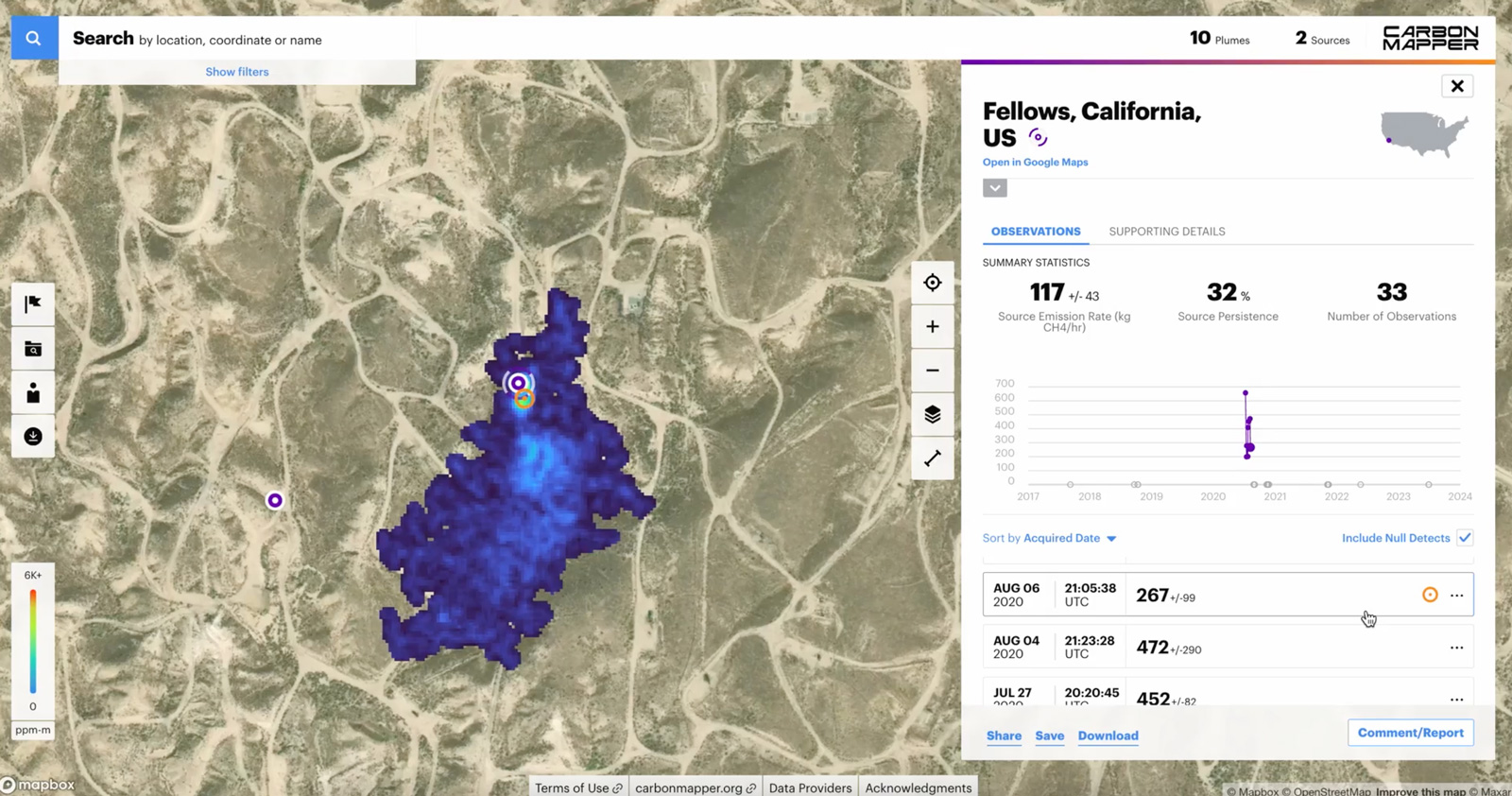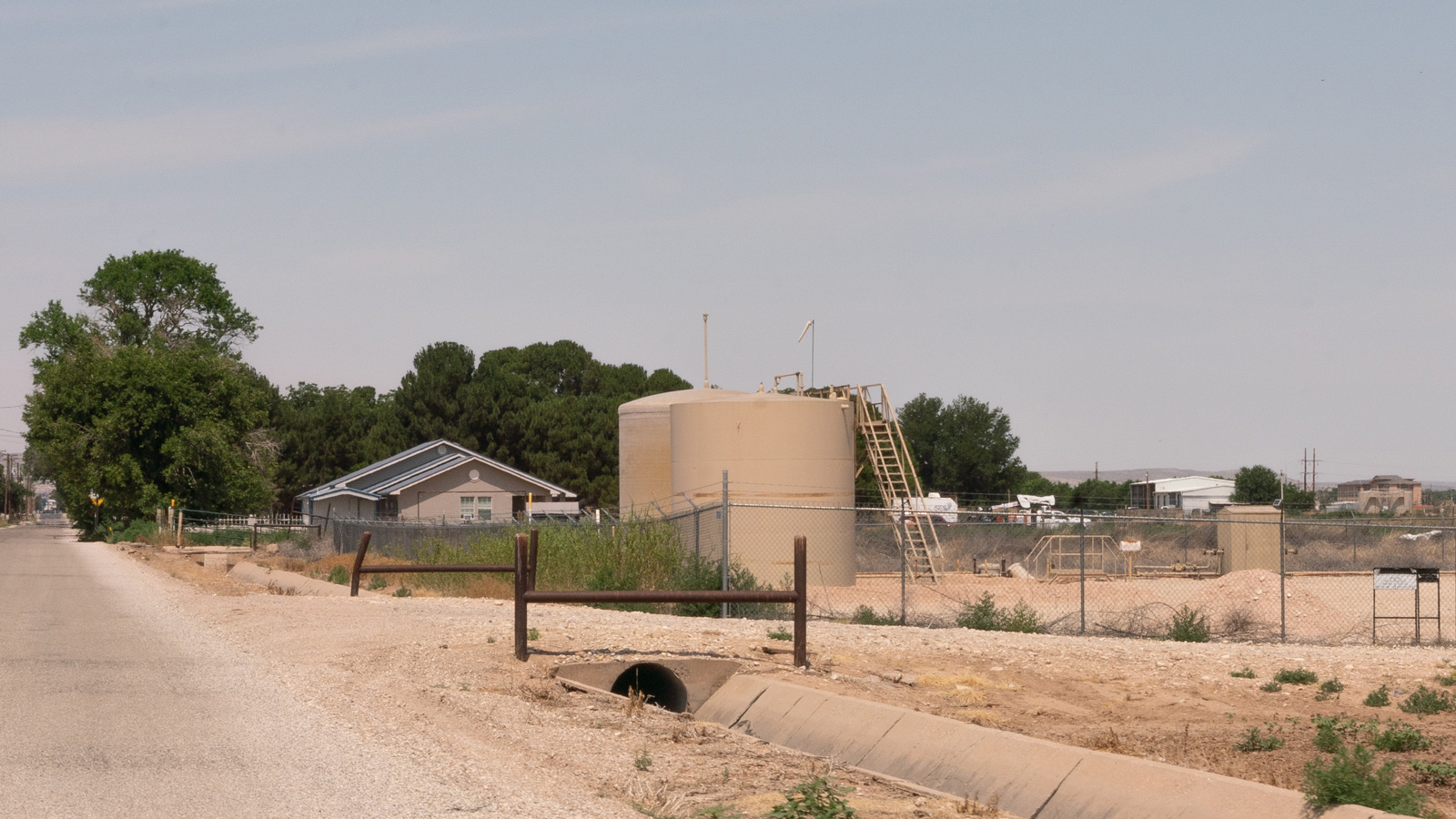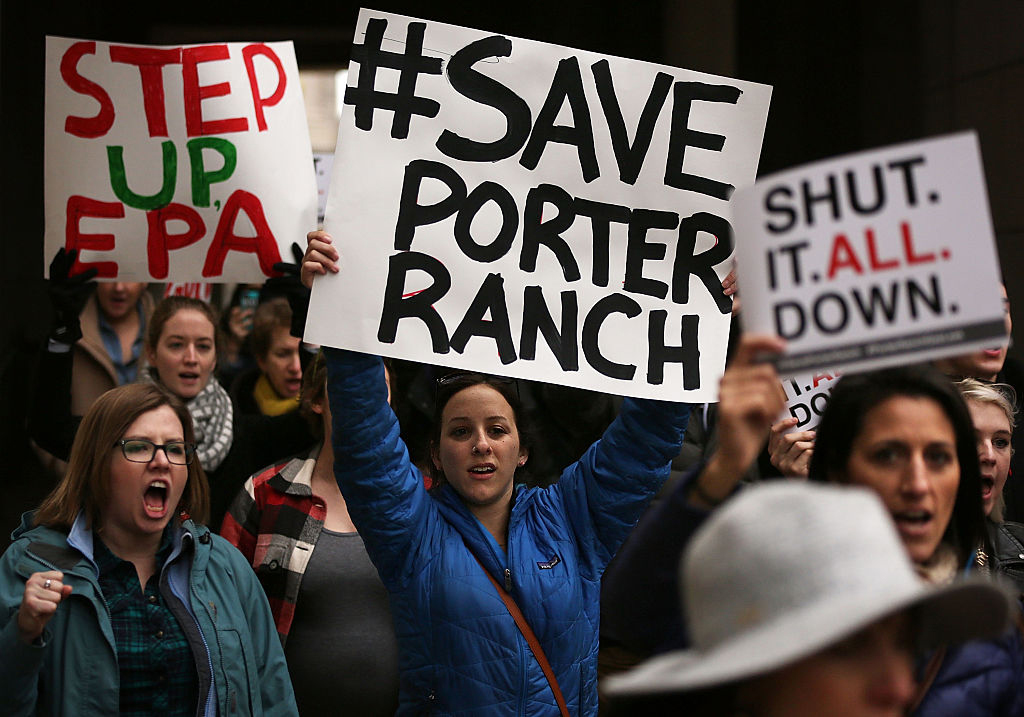
Scientists with NASA’s Jet Propulsion Laboratory were flying an aircraft equipped with a visible-infrared imaging spectrometer over an oil field in California’s San Joaquin Valley when they made an alarming discovery. Images produced by the device revealed a large plume of methane in the air.
The plane flew over the field for a few more weeks. The plume shifted and changed shape with the gusting wind, but its presence persisted, indicating that its source could be a leak at the oil well. The scientists notified the operator. Soon the plume disappeared. The leak, originating from a small fuel line, was repaired.
“This is the essence of proactive measurement,” Riley Duren, one of the scientists involved in the flights and now CEO of Carbon Mapper, told Grist. “This is a good example of how you want it to work.”

The leak, detected in July 2020, was what is called a “superemitter”. The term refers to events in which a lot of methane is quickly expelled, or to infrastructure that releases a disproportionately large amount of the gas. In oil and gas production, events can occur intentionally, as part of routine processes such as venting (when producers intentionally release unburned gas) or accidentally, as a result of faulty equipment or human error.
However it happens, super-emitters release a particularly insidious greenhouse gas. Although it only stays in the atmosphere for about a decade, methane is 28 times more powerful than carbon dioxide at trapping heat in the atmosphere. Because methane has no color or smell, releases can go undetected for months.
Almost one-third of its emissions in the US come from the oil and natural gas sector, and super emitters account for almost half of them. But a new emissions rule from the Environmental Protection Agency, or EPA, targets super-emitters by using technology like remote-sensing aircraft and even high-resolution satellites to not only find leaks, but hold those who cause them accountable.
The EPAs methane rule, Announced December 2 at the COP28 climate summit in Dubai, includes a series of regulations aimed at addressing the gas and other hazardous pollutants at oil and gas facilities. It sets emission standards for new equipment, phases out routine flaring of natural gas, guides states in regulating emissions from existing equipment, and requires industry to conduct regular monitoring for leaks.
“Its importance should not be underestimated,” Darin Schroeder, of the Clean Air Task Force’s methane pollution prevention program, said of the rule. “Reducing methane emissions is the best action we can take now to bend the climate curve.” The EPA predicts the new regulations will avoid 58 million tons of methane emissions by 2038, reducing projected emissions of the gas by 80 percent.
The rule also includes the “super emitter program,” in which outside organizations certified by the EPA can use approved remote sensing technologies, including airborne spectrometers and satellites, to monitor oil and gas facilities and detect large releases.
Under the program, watchdogs will report super-emitter events — defined as a release of more than 100 kilograms per hour — to the EPA, which examines the data and informs the operator. The owner must investigate and report to the EPA within 15 days explaining how and when it will fix the problem.
The EPA will also post verified super-emitter events on the program’s website, allowing those in frontline communities to monitor their potential exposure to hazardous gases.
Schroeder said the program gives organizations that already identify leaks a way to make their data actionable. “They’re finding super emitters everywhere, but there’s nothing to do with that information,” he told Grist.
One of those organizations is Carbon Mapper, a nonprofit created in 2020 to reduce emissions with data from specific facilities. The aircraft using Carbon Mapper carries an imaging spectrometer that can measure hundreds of wavelengths of light. Gases absorb different wavelengths of light, giving a “spectral fingerprint” invisible to the human eye.
Through a coalition that includes JPL, Planet Labs, and several other institutions, Carbon Mapper is working to change that launching two spectrometer-equipped satellites to track methane and CO2 directly at their sources.
Satellites are rapidly increasing the potential of methane monitoring. The UN-led Methane Warning and Response System, launched at COP27, have used them to issue warnings on 127 plumes over the past year. The technology is also expected to play an important role in monitoring the new Oil and Gas Exploration Charterannounced at COP28, committing 50 oil companies to drastically lower their methane pollution by 2030.
In the super-emitter program, Carbon Mapper’s Duren said outside monitoring would act as a backstop to the inspections oil and gas companies do themselves. Although the EPA rule requires operators to periodically check their infrastructure and repair leaks, inspections are done bimonthly or even quarterly. “Super emitters are unpredictable,” Duren said. “There’s a lot of methane that could be released in between, which a satellite could capture.”
Methane can also be released in places that are not monitored at all. Duren says his team often detects emissions coming from abandoned oil wells. The Interstate Oil and Gas Commission counts more than 130,000 orphan wells in the USbut estimates suggest there may be between 310,000 and 800,000 still unidentified.
The new rule requires operators to address verified leaks, something Andrew Klooster of the advocacy group Earthworks said they don’t always do.
As a field attorney in Colorado, Klooster uses a hand-held camera called an optical gas imaging thermograph to detect pollution. In a press briefing last week, he recalled visiting a site in Idaho last spring where the EPA found problems with leaking storage tanks half a decade ago.
“Fast forward five years and these issues have continued, they have not been addressed,” Klooster said. “Without strong regulations and oversight, the oil and gas industry cannot be relied upon to strive for anything more than the minimum of emission reductions.”

Courtesy of Center for Biological Diversity / Becca Grady
The program can also empower frontline communities. The EPA will publish confirmed super-emitters on their website, making it easier for nearby residents to know what is being released by neighboring oil and gas operations.
Releases can be dangerous in the short and long term: As the gas pours out, volatile organic compounds such as benzene, which can increase the risk of chronic diseases and cancers. During the 2015 Aliso Canyon Methane Gas Leakthat lasted almost four monthsmore than 8,000 households in the Los Angeles suburb of Porter Ranch had to be evacuated to escape a leaking well.

Joseph Hernandez, Native Energy Organizer for the Native American Voters Alliance, or Naeva, noted in the press briefing that Native communities in New Mexico are surrounded by operational wells. In San Juan County alone, 27,000 Native Americans live within a half-mile of an oil and gas production site, he said.
As a former oil worker living on the Navajo Nation, Hernandez has seen the risks firsthand. “It’s not a question of if [leaks] will happen, but when,” he said. “Our communities deserve protection.”
How much the program protects people will depend on how effectively it’s enforced, according to Lauren Pagel, policy director at Earthworks, who said that even states with strict methane regulations currently don’t have enough inspectors or high enough fines to compel companies to act. “Without enforcement on the ground, we could be in the same situation as we are now.”
The EPA rule is expected to take effect early next year, but monitors must first be certified by the agency. It is not yet clear how many organizations can apply to join the program. The Environmental Protection Fund will start its own methane detection satellite in 2024. The company GHGSat operates 12 satellites that detect greenhouse gases and says it will monitor every major industrial site in the world by 2026but did not respond to requests for comment on whether it would participate in the program.
Access to the technology will be a barrier, as will funding. Carbon Mapper relies on philanthropic support to carry out its monitoring. “This is something that governments are going to have to step up to solve,” Duren said, “to make sure that these programs are maintained and expanded and sustained.”
In an email, the EPA confirmed that the rule does not include funding, but said the agency has a partnership with the Energy Department to provide financial assistance for monitoring and reducing methane emissions from the oil and gas sector, which “is intended to supplement EPA’s regulatory programs.”
As the oil and gas industry updates equipment to comply with other aspects of the rule, Duren hopes that eventually there will be far fewer super emitters to detect. But it will take time. “We’re all going to be very busy with this for the rest of the decade.”



